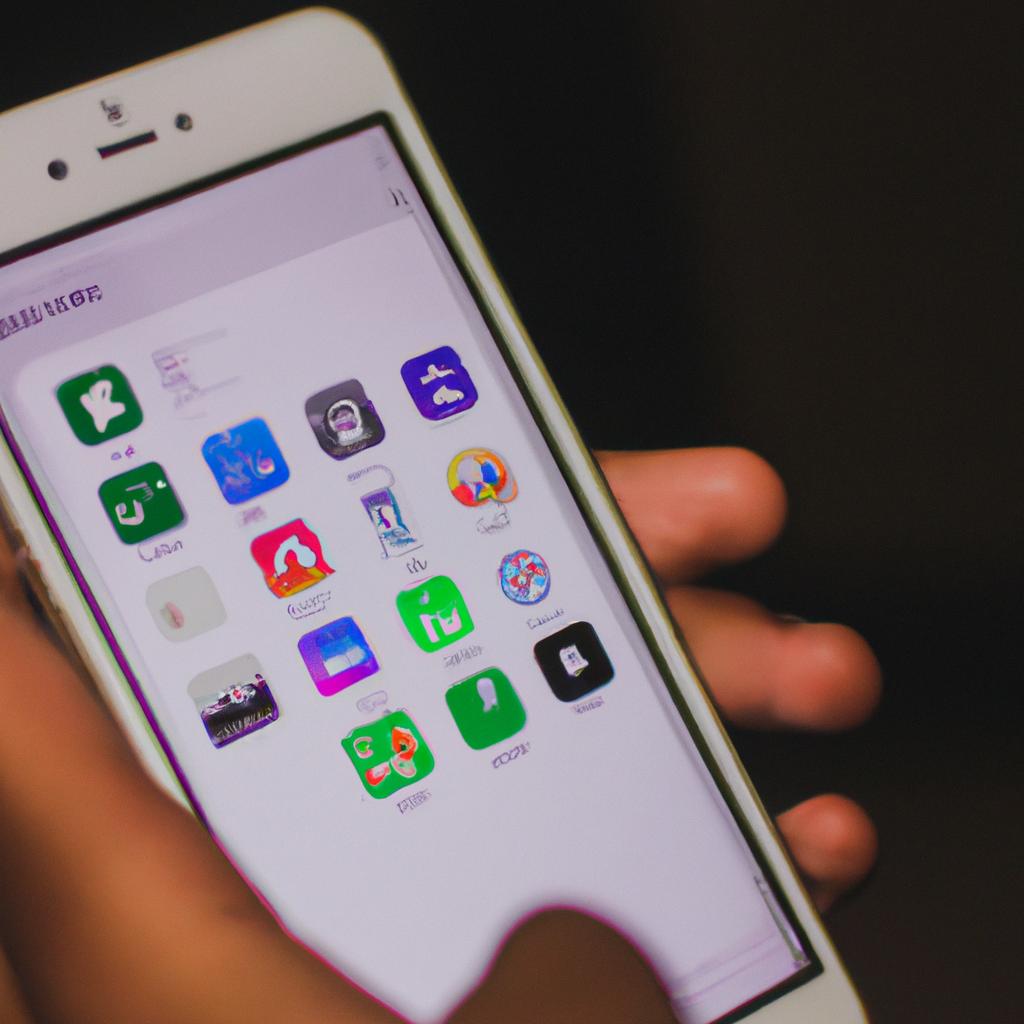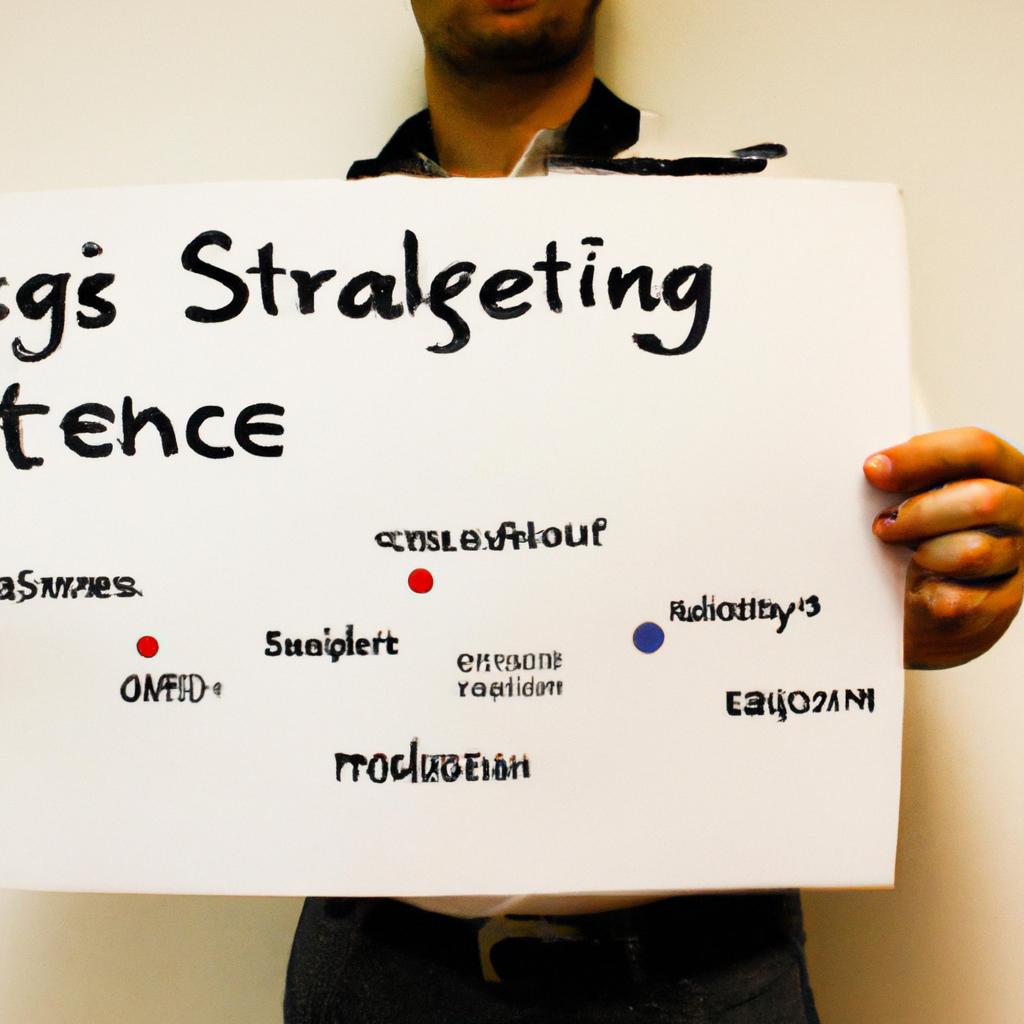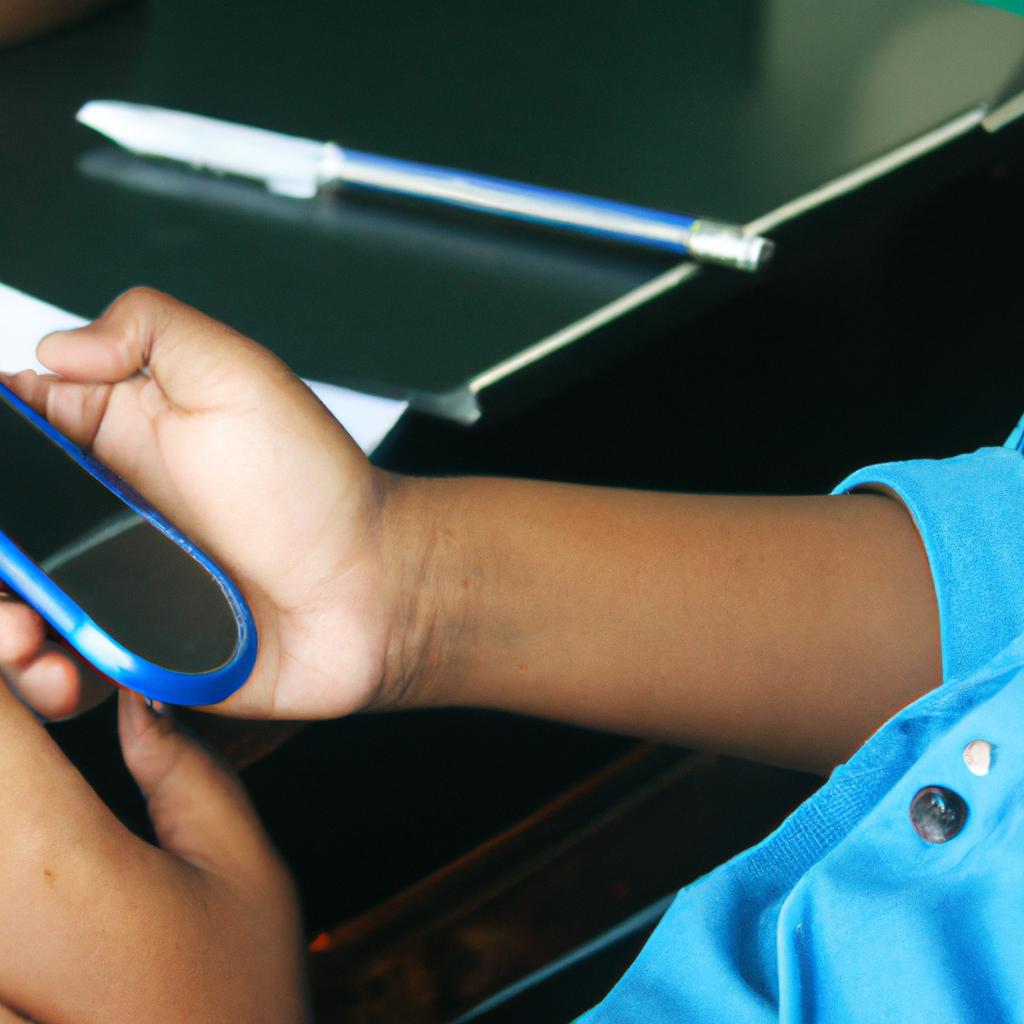In the world of marketing and advertising, influencer partnerships have emerged as a powerful promotional strategy. By collaborating with influential individuals on social media platforms, brands are able to tap into their vast network of followers and leverage their credibility to promote products or services. For instance, imagine a renowned fitness blogger partnering with a sports apparel brand to endorse their new line of workout gear. Through this collaboration, the brand gains access to the influencer’s loyal fan base who trust and value their recommendations. This article explores the concept of influencer partnerships in depth, examining how they have revolutionized traditional advertising methods and discussing the various benefits and challenges that arise from such collaborations.
The rise of social media has created a shift in consumer behavior, giving birth to a new type of marketing known as influencer marketing. Influencers are individuals who have amassed substantial followings on platforms like Instagram, YouTube, or TikTok by creating content that resonates with their audience. These influencers possess the power to shape opinions and influence purchasing decisions due to their perceived authenticity and relatability. As a result, brands recognize the potential for mutually beneficial relationships through influencer partnerships. However, while these collaborations offer numerous advantages such as increased brand awareness, expanded reach, and enhanced credibility among target demographics, they also come with their fair share of challenges.
One of the main benefits of influencer partnerships is the ability to reach a larger audience. Influencers have dedicated followers who trust and engage with their content regularly. By collaborating with an influencer, brands can tap into this existing fan base and expose their products or services to a wider audience. This can lead to increased brand awareness and visibility, ultimately driving more traffic to the brand’s website or social media platforms.
In addition to reaching a larger audience, influencer partnerships can also enhance a brand’s credibility. When an influential individual endorses a product or service, it signals to their followers that the brand is trustworthy and reliable. This association with the influencer’s personal brand helps build positive perceptions around the endorsed product or service, potentially leading to higher conversion rates and customer loyalty.
However, there are challenges that brands must navigate when entering into influencer partnerships. One such challenge is finding the right influencers whose values align with the brand’s image and target audience. It is crucial for brands to thoroughly research potential partners to ensure they have genuine influence within their niche and a strong connection with their followers.
Another challenge is maintaining authenticity in influencer collaborations. While influencers are known for their authentic content, there may be instances where sponsored posts feel forced or disingenuous. Brands must work closely with influencers to strike a balance between promoting their products and maintaining the influencer’s unique voice and style. Authenticity is key in order for these partnerships to resonate with consumers and drive meaningful engagement.
Lastly, measuring the return on investment (ROI) from influencer partnerships can be challenging. Unlike traditional advertising methods like TV commercials or print ads, tracking the impact of influencer marketing can be more complex. Brands need to establish clear goals and metrics upfront, such as engagement rates, click-through rates, or sales conversions, in order to effectively evaluate the success of these collaborations.
In summary, influencer partnerships have revolutionized traditional advertising methods by leveraging the power of social media and influential individuals. These collaborations offer brands the opportunity to reach a larger audience, enhance their credibility, and drive engagement. However, navigating the challenges such as finding the right influencers, maintaining authenticity, and measuring ROI is crucial for successful influencer marketing campaigns.
Understanding influencer partnerships
Understanding Influencer Partnerships
In today’s digital age, influencer partnerships have become a prominent marketing strategy for brands seeking to reach their target audience effectively. These collaborations involve partnering with influential individuals on social media platforms who have built a loyal following and can influence the purchasing decisions of their followers. To illustrate this concept, let us consider a hypothetical example: a beauty brand collaborating with a popular makeup artist on Instagram. By featuring the brand’s products in their posts and recommending them to their followers, the makeup artist helps create awareness and generate interest among potential customers.
One key aspect of influencer partnerships is the level of trust that influencers have established with their audience. This trust stems from authentic content creation, where influencers share personal experiences and genuine opinions about products or services. As a result, when an influencer recommends a particular brand or product, it resonates with their followers, leading to higher engagement rates and increased conversions.
To further understand the impact of these partnerships, let us delve into four key benefits:
- Increased Brand Awareness: Collaborating with influencers allows brands to tap into new audiences beyond their existing customer base. Through exposure to the influencer’s extensive network, more people become aware of the brand and its offerings.
- Enhanced Credibility: When an influencer endorses a product or service, they lend credibility to it through their expertise and reputation within their niche market.
- Higher Engagement Rates: Influencers typically have highly engaged followings who actively interact with their content. Therefore, partnering with influencers can lead to increased likes, comments, shares, and overall engagement for brands.
- Improved Conversion Rates: Due to the authenticity factor associated with influencer recommendations, consumers are more likely to convert after being exposed to such endorsements.
The table below provides an overview of some successful influencer partnership campaigns conducted by various brands:
| Brand | Influencer | Campaign Objective |
|---|---|---|
| Nike | Cristiano Ronaldo | Promote new sport shoes |
| Coca-Cola | Selena Gomez | Raise brand awareness |
| Adidas | Beyonce | Launch exclusive line |
| Glossier | Emily Weiss | Showcase new products |
Understanding the importance of targeted audience and tailoring influencer partnerships accordingly is crucial. This will be discussed in the subsequent section, as it directly impacts the effectiveness and success of such collaborations.
By comprehending the concept behind influencer partnerships and recognizing their benefits, brands can leverage this marketing strategy to effectively promote their products or services. In the following section, we explore how identifying a targeted audience plays a vital role in maximizing the impact of these partnerships.
The importance of targeted audience
Understanding influencer partnerships is crucial for implementing successful promotional strategies in marketing and advertising. By collaborating with influential individuals, brands can tap into their existing audience base and leverage their influence to promote products or services effectively. In this section, we will delve deeper into the importance of targeting specific audiences when forming influencer partnerships.
To illustrate the significance of targeted audience selection, let us consider a hypothetical case study involving a fitness apparel brand looking to increase its online visibility and drive sales. The brand decides to partner with an Instagram fitness influencer who has a massive following within the fitness community. This collaboration allows the brand to reach thousands of potential customers who are already interested in health and wellness, increasing the chances of conversion.
When choosing influencers to collaborate with, it is essential to consider several factors that ensure alignment between the brand’s values and target audience interests:
- Relevance: Selecting influencers whose content aligns closely with your brand message ensures better resonance with the intended audience.
- Reach: Assessing an influencer’s follower count helps gauge their potential impact on raising awareness about your brand.
- Engagement: Evaluating an influencer’s level of engagement (likes, comments, shares) indicates how well their content resonates with their followers.
- Authenticity: Partnering with influencers who have built trust and credibility within their niche guarantees a more genuine endorsement of your product or service.
| Factor | Importance | Description |
|---|---|---|
| Relevance | High | Ensures alignment between influencer and target |
| audience interests | ||
| Reach | Medium | Indicates potential reach among desired |
| demographic | ||
| Engagement | High | Reflects how well content resonates |
| with influencer’s followers | ||
| Authenticity | High | Guarantees genuine endorsement |
By considering these factors, brands can strategically choose influencers whose audience aligns with their target demographic. This targeted approach maximizes the chances of reaching potential customers who are more likely to engage with and convert from influencer-driven campaigns.
In the subsequent section about “Choosing the right influencers,” we will discuss how to further refine this process by exploring additional criteria that should be considered when selecting influencers for partnerships.
Choosing the right influencers
In today’s digital age, influencer partnerships have become an integral part of marketing and advertising strategies. By collaborating with influencers who have a strong following and influence over their audience, brands can effectively promote their products or services to a targeted demographic. This section will explore the impact of influencer partnerships on promotional strategies, highlighting the importance of selecting the right influencers for successful campaigns.
One compelling example that illustrates the power of influencer partnerships is the collaboration between fitness brand XYZ and renowned fitness guru Anna Thompson. With millions of dedicated followers across various social media platforms, Anna has established herself as an authority in the health and wellness industry. By partnering with her, XYZ was able to tap into her engaged audience base, resulting in increased brand visibility and credibility within their target market.
When choosing influencers for partnership collaborations, several factors need to be considered:
- Relevance: It is crucial to select influencers whose content aligns with your brand’s values and objectives. This ensures authenticity in promoting your product or service.
- Reach: Evaluating an influencer’s reach involves considering their total number of followers across different platforms. A larger reach implies a wider potential audience exposure for your brand.
- Engagement: Assessing an influencer’s engagement rate helps determine how well they connect with their followers. High levels of interaction indicate a more active and receptive audience.
- Demographics: Understanding an influencer’s follower demographics allows you to assess whether their audience matches your target market, ensuring effective communication and connection.
To further emphasize the significance of these considerations when selecting influencers, consider the following table showcasing two hypothetical influencers:
| Influencer | Relevance | Reach | Engagement |
|---|---|---|---|
| Fitness Maven | High | 500k | Medium |
| Lifestyle Guru | Moderate | 1M | High |
In this hypothetical scenario, while both influencers have a substantial reach, the Fitness Maven aligns closely with XYZ’s fitness brand and has moderate engagement. On the other hand, the Lifestyle Guru may have a larger audience but lacks relevance to XYZ’s target market.
By strategically partnering with influencers who possess these desirable qualities, brands can effectively leverage their influence and engage with their desired audience. This leads us to the next section on negotiating partnership agreements, where we will explore how to establish mutually beneficial collaborations that maximize promotional impact without compromising either party’s interests.
Negotiating partnership agreements
Transitioning from the previous section on choosing the right influencers, it is crucial for marketers and advertisers to effectively negotiate partnership agreements with these chosen influencers. By establishing clear expectations and guidelines, both parties can align their goals and ensure a successful promotional campaign.
For instance, let’s consider the case of an influencer partnership between a beauty brand and a popular makeup artist. The negotiation process involved discussing deliverables such as sponsored posts on social media, product placements in videos, and participation in brand events. This allowed the brand to leverage the influencer’s expertise while increasing visibility among their target audience.
When negotiating influencer partnerships, several key factors should be taken into account:
- Compensation: Determining fair compensation for influencers based on metrics such as follower count, engagement rates, and content quality.
- Content Ownership: Clarifying who owns the rights to the created content – whether it will be exclusively owned by the brand or shared with the influencer.
- FTC Compliance: Ensuring that all sponsored content complies with Federal Trade Commission (FTC) guidelines regarding transparency and disclosure.
- Performance Metrics: Establishing measurable key performance indicators (KPIs) to evaluate the success of the partnership and provide feedback for future collaborations.
To better understand these considerations, refer to Table 1 below:
Table 1: Key Considerations in Negotiating Influencer Partnerships
| Factor | Explanation |
|---|---|
| Compensation | Fairly compensating influencers based on relevant metrics |
| Content Ownership | Clear delineation of ownership rights over created content |
| FTC Compliance | Adhering to FTC guidelines regarding transparent disclosure |
| Performance | Defining KPIs to measure success |
By addressing these critical aspects during negotiations, brands can establish mutually beneficial partnerships that maximize reach and impact. Furthermore, setting clear parameters helps avoid potential misunderstandings and conflicts that may arise during the campaign.
Moving forward, the next section will delve into the importance of creating authentic content in influencer partnerships. By focusing on authenticity, brands can enhance engagement and establish long-term connections with their target audience.
Creating authentic content
Negotiating partnership agreements is a crucial step in establishing successful influencer partnerships. Once the parties have identified their shared goals and objectives, it becomes essential to negotiate the terms of the agreement that will govern their collaboration. To illustrate this process, let’s consider an example: a beauty brand partnering with a popular makeup artist on Instagram.
Firstly, both parties need to agree on the scope of work and deliverables expected from each other. The beauty brand may require the makeup artist to create three sponsored posts per month featuring their products, along with mentions in her stories and participation in promotional events. In return, the makeup artist may request exclusive access to new product launches and a percentage of sales generated through her referral code.
Secondly, financial compensation must be determined fairly for both sides. This can involve negotiating fees based on factors such as the influencer’s reach, engagement rates, and previous campaign successes. It is important for brands to recognize the value influencers bring to their campaigns and compensate them accordingly.
Thirdly, legal considerations should not be overlooked when drafting partnership agreements. Both parties need protection against potential breaches or disputes. Contracts should include clauses addressing intellectual property rights, exclusivity arrangements, confidentiality obligations, disclosure requirements according to advertising regulations, termination procedures, and any other relevant legal matters.
To give you further insight into what makes influencer partnerships successful beyond negotiation strategies alone:
- Authenticity: Influencers who genuinely align with a brand’s values are more likely to resonate with their audience.
- Creativity: Collaborations that allow influencers creative freedom tend to result in engaging content that captures viewers’ attention.
- Transparency: Disclosing sponsored content helps maintain trust between influencers and their followers.
- Long-term relationships: Building long-lasting partnerships allows brands and influencers to develop authentic connections over time.
| Factor | Impact | Emotion |
|---|---|---|
| Authenticity | Increases brand credibility | Trust |
| Creativity | Enhances audience engagement | Interest |
| Transparency | Builds trust with followers | Reliability |
| Long-term relationships | Fosters brand loyalty | Connection |
Moving forward, measuring the effectiveness of influencer partnerships is essential in determining the return on investment and identifying areas for improvement. By analyzing key metrics such as reach, engagement rates, conversion rates, and sales attributed to the partnership, brands can assess the impact of their collaborations. Additionally, gathering feedback from influencers themselves can provide valuable insights into what worked well and any potential challenges they faced during the campaign.
Measuring the effectiveness of influencer partnerships
Transitioning from the previous section on creating authentic content, it is crucial for marketers to assess the effectiveness of their influencer partnerships. By measuring key metrics and analyzing data, businesses can gain valuable insights into the success of their marketing campaigns and make informed decisions moving forward.
To illustrate this point, let’s consider a hypothetical case study involving a fashion brand collaborating with an Instagram influencer. The brand carefully selected an influencer whose audience aligns with its target market. They created engaging content featuring the influencer promoting their latest collection. Now, it becomes essential to measure the impact of this partnership to evaluate its return on investment (ROI).
There are several ways in which marketers can measure the effectiveness of their influencer partnerships:
- Reach and engagement: Assessing the number of impressions, likes, comments, shares, and saves generated by the influencer’s posts provides insights into how well the campaign resonated with the audience.
- Conversion rate: Tracking click-through rates or using unique discount codes provided by influencers helps determine if followers were motivated to take action.
- Brand sentiment analysis: Monitoring social media mentions and sentiment surrounding both the brand and influencer after collaboration allows businesses to gauge public perception.
- Sales attribution: Analyzing sales data during and after an influencer campaign enables marketers to attribute specific revenue directly to that particular partnership.
| Metrics | Hypothetical Results | Target Benchmark |
|---|---|---|
| Reach | 500K impressions | N/A |
| Engagement | 10K likes | N/A |
| Conversion Rate | 5% | >3% |
| Sentiment Analysis | Positive sentiment | Neutral |
By utilizing these measurement techniques, brands can better understand whether their collaborations with influencers are achieving desired outcomes such as increased brand awareness, customer engagement, and ultimately, sales. It is important to note that these metrics should be evaluated in relation to the brand’s specific goals and benchmarks.
In summary, measuring the impact of influencer partnerships allows businesses to assess the effectiveness of their marketing efforts. By analyzing reach, engagement, conversion rates, sentiment analysis, and sales attribution, marketers can make data-driven decisions when selecting future influencers or refining existing strategies. The ability to measure ROI provides invaluable insights that aid in optimizing promotional tactics for maximum success.










